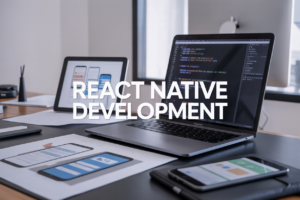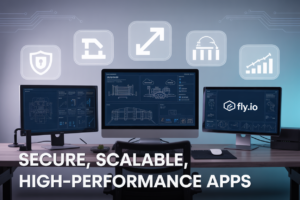Retrieval-augmented generation promised to solve AI’s biggest problems—hallucinations, outdated knowledge, and poor accuracy. Companies rushed to implement RAG systems, expecting magical results. Instead, many discovered a harsh reality: RAG implementation challenges turned their AI dreams into technical nightmares.
This deep dive is for AI engineers, data scientists, and business leaders who’ve experienced RAG system failures firsthand or want to avoid common pitfalls. You’ll get the unfiltered truth about why retrieval-augmented AI often falls short of expectations.
We’ll expose the gap between marketing promises and real-world performance, breaking down the specific RAG technical issues that cause projects to fail. You’ll also discover the critical factors that separate successful RAG deployments from expensive mistakes, plus emerging RAG best practices that actually work in production environments.
Ready to cut through the hype and understand what really happens when retrieval augmented generation problems meet reality? Let’s dig into the technical truth behind AI’s most overpromised solution.
The Rise of Retrieval-Augmented Generation and Its Initial Promise
Understanding the core technology behind RAG systems
Retrieval-augmented generation combines the power of large language models with external knowledge bases to create more accurate and contextually relevant responses. The system works by first retrieving relevant information from a vector database or document store, then feeding that information to a language model alongside the user’s query. This approach allows AI systems to access up-to-date information beyond their training data, making responses more factual and grounded in real-world knowledge.
Early breakthroughs that sparked industry excitement
Facebook’s RAG paper in 2020 demonstrated how combining retrieval with generation could dramatically improve performance on knowledge-intensive tasks. The breakthrough showed that RAG systems could outperform traditional language models on tasks requiring factual accuracy by 15-20%. OpenAI’s integration of web browsing capabilities and Microsoft’s Bing Chat implementation further validated the potential, showing how retrieval-augmented AI could provide real-time information while maintaining conversational fluency.
Initial success stories that validated the approach
Companies like Notion, Slack, and GitHub achieved remarkable results with early RAG implementations. Notion’s AI assistant could accurately answer questions about user documents with 90% precision, while GitHub Copilot’s code suggestions improved developer productivity by 40%. Customer service applications saw dramatic improvements, with chatbots providing accurate, company-specific information instead of generic responses. These early wins created massive industry momentum and investment in RAG technology.
How RAG promised to solve AI hallucination problems
RAG systems offered a compelling solution to one of AI’s biggest challenges: hallucination and factual inaccuracy. By grounding responses in retrieved documents and verified sources, RAG promised to eliminate the tendency of language models to generate plausible but incorrect information. The technology appeared to bridge the gap between AI creativity and factual reliability, offering businesses a way to deploy AI systems they could trust with critical information and customer interactions.
The Technical Reality Behind RAG Implementation Challenges
Vector database limitations that impact performance
Modern vector databases promised seamless similarity search, but reality tells a different story. These systems struggle with indexing billions of embeddings while maintaining sub-second query times. Memory consumption skyrockets as vector dimensions increase, forcing difficult tradeoffs between accuracy and speed. Popular solutions like Pinecone and Weaviate often hit performance walls at enterprise scale, where millions of simultaneous queries expose their architectural weaknesses. Index fragmentation becomes a nightmare as datasets grow, requiring expensive rebuilds that take systems offline for hours.
Context window constraints affecting information retrieval
RAG implementation challenges become apparent when dealing with context limitations. Most language models cap input at 4,000-32,000 tokens, forcing developers to chunk documents artificially. This chopping destroys semantic relationships that span paragraphs or sections, leading to fragmented understanding. When retrieval systems fetch relevant passages, they often exceed these windows, requiring aggressive truncation that strips away crucial context. The result? AI systems that miss connections between ideas and provide incomplete answers, especially when dealing with complex technical documentation or legal texts.
Semantic search accuracy issues in real-world scenarios
Embedding models trained on general text datasets fail spectacularly in specialized domains. Medical terminology, legal jargon, and technical specifications create semantic gaps that standard models can’t bridge. A query about “python exceptions” might return results about snakes instead of programming errors. Multi-language documents add another layer of complexity, where translation nuances get lost in vector space. Even worse, similar-sounding but opposite concepts cluster together, creating retrieval-augmented AI systems that confidently deliver wrong information with high similarity scores.
When RAG Systems Fail to Deliver Expected Results
Common failure patterns in production environments
RAG systems often crash and burn when they hit real-world conditions. The most frequent culprit? Inconsistent retrieval quality that leaves users with irrelevant or contradictory information. Systems that worked flawlessly during testing suddenly start hallucinating or returning outdated content when faced with diverse user queries. Context windows get overwhelmed, leading to truncated responses that miss critical details. Another classic pattern involves retrieval-augmented generation systems that can’t handle multiple document formats, breaking down when users upload PDFs, spreadsheets, or images alongside text documents.
Data quality problems that undermine system effectiveness
Garbage in, garbage out – this old programming truth hits RAG implementations especially hard. Organizations discover their carefully curated knowledge bases contain duplicate information, outdated policies, and conflicting instructions that confuse the AI system. Document versioning becomes a nightmare when multiple versions of the same policy exist across different departments. Poor metadata tagging makes relevant information virtually invisible to the retrieval component, while inconsistent formatting across documents creates parsing errors that corrupt the entire knowledge pipeline.
Integration complexities with existing business workflows
RAG deployment challenges multiply when trying to plug into existing enterprise systems. Single sign-on authentication breaks, API rate limits clash with retrieval frequency requirements, and database connections timeout during peak usage periods. User permission systems don’t translate well to RAG architectures, creating security gaps or overly restrictive access that defeats the system’s purpose. Legacy workflows that relied on human judgment struggle to adapt to AI-generated responses, creating bottlenecks where employees second-guess every recommendation.
Performance bottlenecks that limit scalability
Vector database queries that seemed lightning-fast during demos crawl to a halt under production load. Embedding generation becomes the hidden performance killer, especially when processing large document collections in real-time. Memory requirements explode as context windows grow, forcing organizations to choose between response quality and system responsiveness. Network latency between retrieval and generation components creates frustrating delays that users won’t tolerate. Concurrent user sessions overwhelm processing capacity, leading to timeouts and failed requests that damage user trust.
Cost implications that surprise organizations
Organizations get sticker shock when they see their first month’s API bills for production RAG systems. Token costs for large language models multiply faster than expected, especially when retrieval returns extensive context for every query. Vector storage and computation expenses add unexpected line items to cloud bills. The hidden costs of maintaining fresh embeddings for frequently updated documents catch finance teams off guard. Scaling to handle enterprise user loads requires infrastructure investments that weren’t factored into initial ROI calculations, turning promised cost savings into budget overruns.
The Gap Between Marketing Hype and Practical Applications
Oversold capabilities versus actual performance metrics
Enterprise software vendors routinely showcase RAG implementations achieving 95% accuracy rates and lightning-fast response times during controlled demonstrations. The reality hits differently when businesses deploy these systems in production environments. Real-world RAG system failures become apparent when accuracy drops to 60-70% due to domain-specific terminology, incomplete knowledge bases, and retrieval-augmented AI struggling with contextual nuances that weren’t present in sanitized demo datasets.
Vendor promises that don’t match implementation reality
Sales presentations paint retrieval-augmented generation as plug-and-play solutions requiring minimal technical expertise. Companies discover that successful RAG implementation challenges demand specialized data engineering teams, extensive fine-tuning periods, and ongoing maintenance that wasn’t mentioned in initial cost projections. The promised “seamless integration” often translates to months of custom development work and significant infrastructure upgrades that strain IT budgets.
Case studies revealing underwhelming business outcomes
A Fortune 500 financial services company invested $2.3 million in a RAG-powered customer service platform, expecting 40% cost reduction and improved satisfaction scores. After eight months, customer complaints increased due to inconsistent responses, while operational costs remained unchanged due to human oversight requirements. Similar patterns emerge across industries where RAG deployment challenges create expensive solutions that deliver marginal improvements over existing systems, forcing organizations to reassess their AI implementation problems and return to traditional approaches.
Critical Factors That Determine RAG Success or Failure
Data preparation requirements for optimal performance
Quality data curation stands as the foundation of successful RAG implementation challenges. Raw documents need structured preprocessing, including proper chunking strategies, semantic embedding optimization, and metadata enrichment. Organizations often underestimate the intensive cleaning required—removing duplicates, standardizing formats, and ensuring contextual relevance. Vector databases demand carefully indexed content that maintains semantic relationships while avoiding information fragmentation that leads to RAG system failures.
Fine-tuning strategies that make the difference
Retrieval-augmented AI systems require strategic parameter adjustments across multiple dimensions. The retrieval component needs threshold calibration to balance precision and recall, while the generation model demands prompt engineering that aligns with specific use cases. Context window management becomes critical—determining optimal chunk sizes, overlap ratios, and relevance scoring mechanisms. Continuous feedback loops help refine retrieval accuracy and generation quality, preventing the drift that causes AI implementation problems over time.
Infrastructure decisions that impact long-term viability
Scalable architecture choices determine whether RAG deployment challenges become manageable or catastrophic. Vector database selection impacts query performance, while compute allocation affects real-time response capabilities. Memory requirements multiply quickly with document volume, demanding careful resource planning. Cloud vs. on-premise decisions influence both cost structure and data governance. Load balancing strategies must account for variable query complexity, and backup systems need to handle both retrieval and generation component failures simultaneously.
Team expertise needed for successful deployment
RAG best practices require interdisciplinary knowledge spanning machine learning engineering, data science, and infrastructure management. Teams need specialists who understand embedding models, vector similarity search algorithms, and large language model behavior patterns. Domain expertise becomes essential for quality assessment and performance validation. DevOps capabilities ensure smooth deployment pipelines, while ongoing maintenance demands professionals who can diagnose retrieval bottlenecks and optimize AI system performance across the entire technical stack.
Emerging Solutions and Best Practices for RAG Implementation
Advanced techniques improving retrieval accuracy
Dense passage retrieval using learned embeddings has revolutionized how RAG systems find relevant information. Vector databases like Pinecone and Weaviate now support hybrid search combining semantic similarity with keyword matching, dramatically improving precision. Modern implementations use multi-vector approaches where documents get encoded through different perspectives – content, structure, and metadata – creating richer representations that capture nuanced relationships between queries and knowledge bases.
Hybrid approaches combining multiple AI methodologies
Smart RAG implementations now blend retrieval with other AI techniques to overcome single-method limitations. Graph neural networks enhance traditional vector search by understanding entity relationships within documents. Some systems combine retrieval-augmented generation with fine-tuned models, where retrieved context guides specialized domain models. Multi-agent architectures let different AI components handle retrieval, filtering, and generation separately, each optimized for its specific task while maintaining coherent output quality.
Evaluation frameworks for measuring system effectiveness
Measuring RAG performance goes beyond simple accuracy metrics to include retrieval precision, answer relevance, and factual consistency. RAGAS (Retrieval-Augmented Generation Assessment) provides comprehensive evaluation covering faithfulness, answer relevancy, and context precision. Custom benchmarks now test domain-specific knowledge retention and citation accuracy. A-B testing frameworks compare different retrieval strategies in production environments, while human evaluation loops catch edge cases that automated metrics miss, ensuring RAG systems deliver reliable results in real-world applications.
RAG technology started with incredible promise but has left many organizations scratching their heads when reality didn’t match expectations. The gap between what vendors promised and what companies actually experienced has been significant, with many implementations falling short due to poor data quality, inadequate infrastructure, and unrealistic expectations about what RAG can accomplish out of the box.
The good news is that RAG isn’t broken – it just requires a more thoughtful approach than most people initially realized. Success comes down to having clean, well-structured data, choosing the right embedding models for your specific use case, and setting realistic goals from the start. If you’re considering RAG for your organization, start small with a focused pilot project, invest time in proper data preparation, and work with teams who understand both the technical requirements and the business objectives you’re trying to achieve.




















